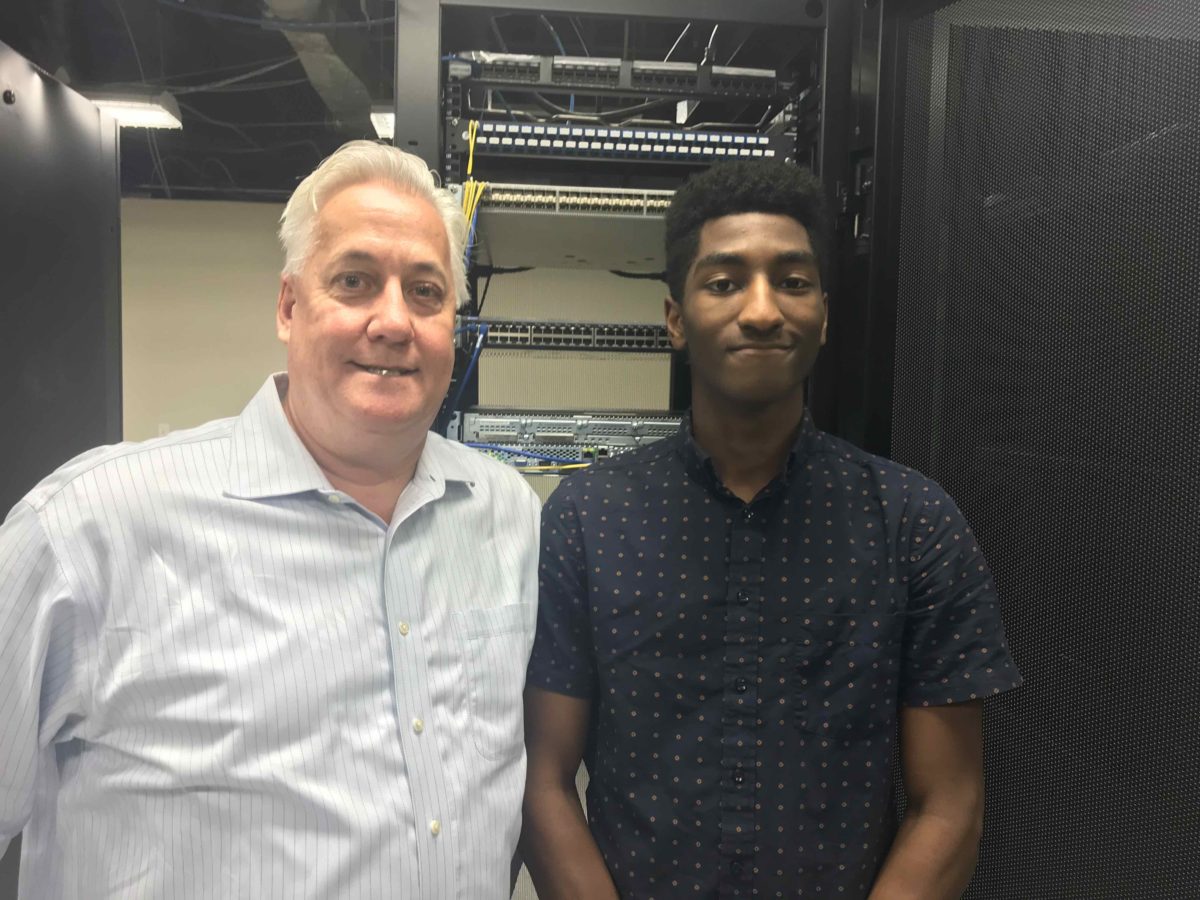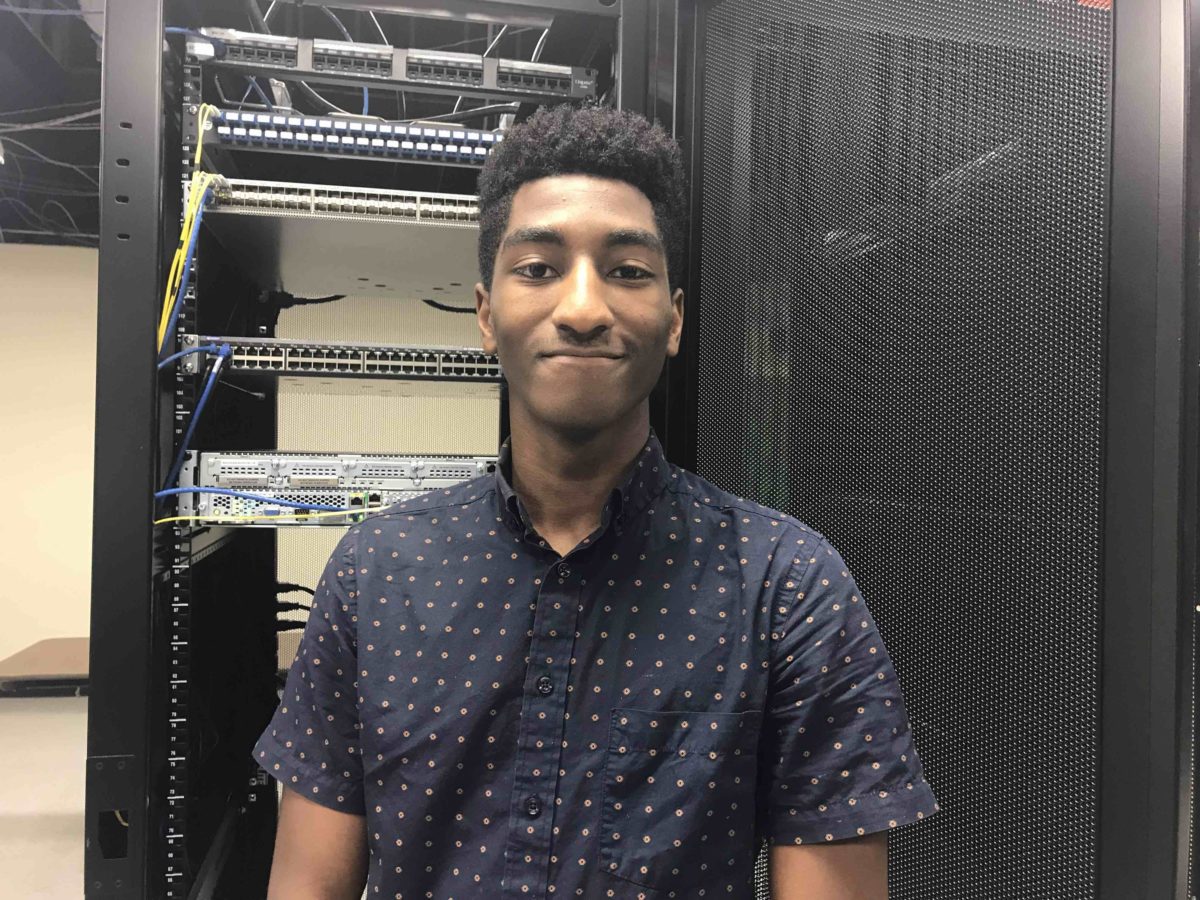As a network engineer, Devin Weaver has followed the growth of internet exchange points (IXP) around the world. With a piece of infrastructure that was recently installed inside a data hub in downtown Baltimore, he’s looking to expand their use locally.
As the founder of BaltIX, short for The Baltimore Internet Exchange, Weaver has this key message: “Keep traffic local.”
At the heart of this approach is a process called peering that allows internet networks to connect, and makes it possible for them exchange traffic between themselves.
This is distinct from a process that’s typically used, called IP transit services. For a local internet service provider or other entity, this involves paying a third party to carry the traffic for them, which Weaver said can be expensive. It also means that traffic from Baltimore goes to the data center hub of Northern Virginia or New York, even if it’s going from one part of the city to another.
“Just to get your traffic from one network in Baltimore to down the street somewhere else, it takes this long path to D.C and Northern Virginia,” Weaver said.
And along with the traffic, the money involved is being routed to another area, too.
“When we’re exporting capital like that, it puts Baltimore at a further economic disadvantage compared to our neighbors,” Weaver said.
To create a home for peering in the city, BaltIX set up an IXP. Located inside AiNET’s Baltimore data center at One Market Center across from Lexington Market, Weaver calls it as “the switch.”
Weaver likens IXPs to “the intersections of the internet.” They allow the service providers to connect, and are the site where peering happens.
“They connect directly to each other in order to get their traffic from point A to point B in a shorter, faster path than they would right now,” Weaver said.
For the providers, an IXP puts the data and the clients who are using it in close proximity. It also creates a community of telecommunications firms, content providers and others that move large amounts of data that can help each other, and the city.
“In the end, peering helps everybody,” Weaver said. “The network operators that connect with it save money. And if they save money, with the aggregation of all this traffic and all these networks in one place, that will promote more content applications and services to want to be close to it.”
The community is growing around the world, and BaltIX is joining it, too. Among the first three connectors also include Packet Clearing House, which provides equipment and support to IXPs around the world. In a map showing its locations, Baltimore joined a list of new “points of presence” that includes Dakar, Tel Aviv and Madrid.
Weaver also has local support. Along with housing the IXP, AiNET is also an internet service provider that is itself peering at the IXP, said Michael Fox, AiNET’s regional VP of business development.
“The minute Devin told me his concept, we were onboard, and we asked to be first in,” Fox said.

Michael Fox and Devin Weaver. (Photo by Stephen Babcock)
In 2016, the firm moved into the data center at One Market Place, which was already known as a telecom hub. Weaver said the center’s existing home as a connecting point made it a natural fit. Fox said that along with being closer to other customers, the location at AiNET also puts it closer to the other fiber and cloud resources available, as well as power, cooling and space offered.
From the BaltIX switch in a single cabinet, Fox also sees lots of benefits for Baltimore.
“If we’re able to push massive amounts of data in the digital economy, it will transform the city,” he said. “It will help the city in ways that you really can’t count.”
Attracting larger providers to connect could in turn attract other businesses who want to be close to it and play a role in growing the local tech economy, Fox and Weaver said. After all, if the internet service providers are all in one place, the thinking goes that the companies who get the traffic like Netflix will want to be here, too.
For larger enterprise businesses, Fox said the IXP can make Baltimore a point as a second location to provide redundancy and security, as the city sits between the data centers of Northern Virginia and big content providers in New York. Within the local tech community, Fox sees the growth of machine learning and cybersecurity in the Baltimore area. While they’re bringing big real estate plans, Fox said these firms will also need to move large amounts of data.
“We look at it as a pathway for those businesses to be even more successful than they are today,” he said.
To continue the conversation about peering, BaltIX is hosting an event on June 13 at the Digital Harbor Foundation. Follow this link to RSVP.
Before you go...
Please consider supporting Technical.ly to keep our independent journalism strong. Unlike most business-focused media outlets, we don’t have a paywall. Instead, we count on your personal and organizational support.
Join our growing Slack community
Join 5,000 tech professionals and entrepreneurs in our community Slack today!

Entrepreneurship is changing, and so is the economic development behind it

Tech Hubs’ new $210M funding leaves Baltimore and Philly off the table

Here’s what to know before using AI to craft your brand’s social media posts


